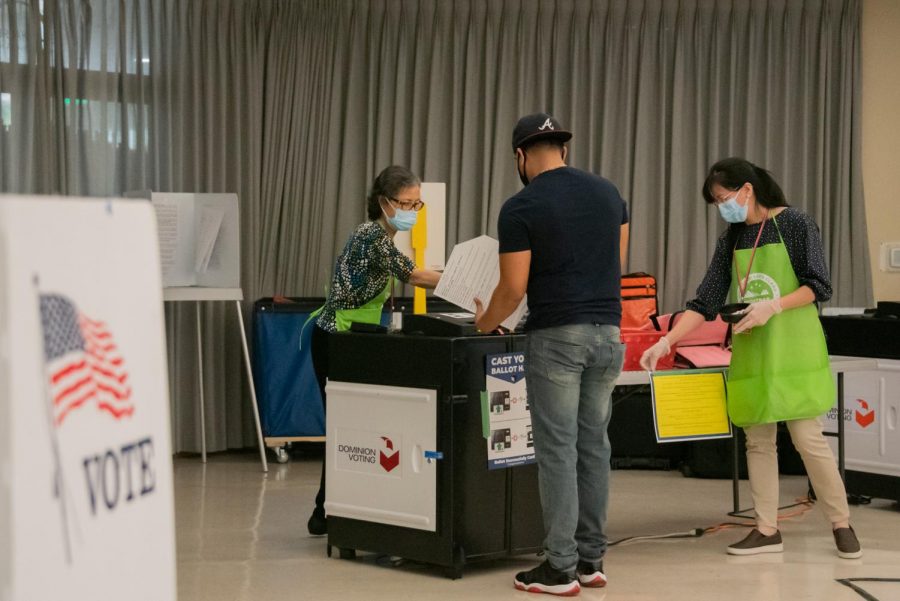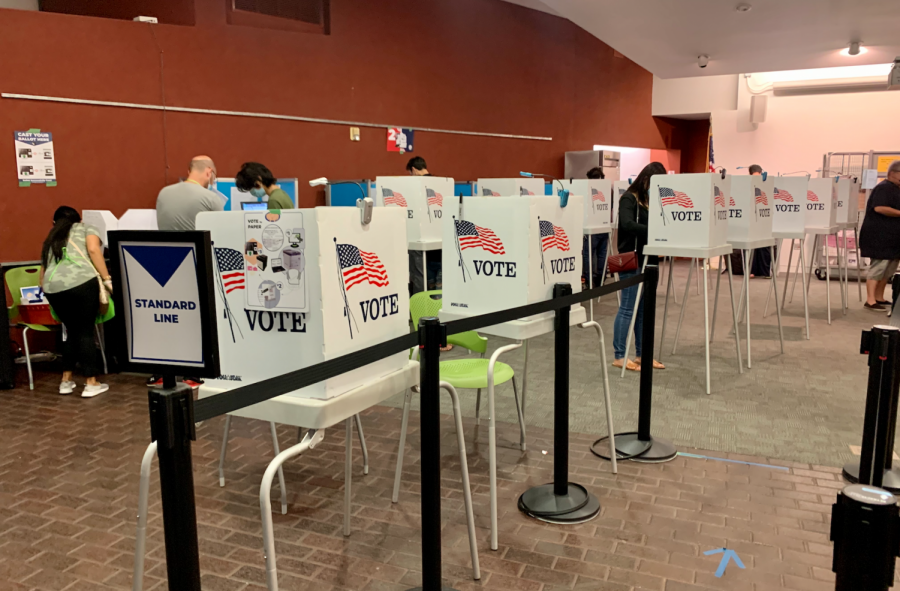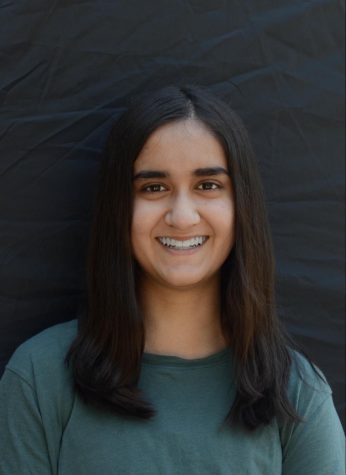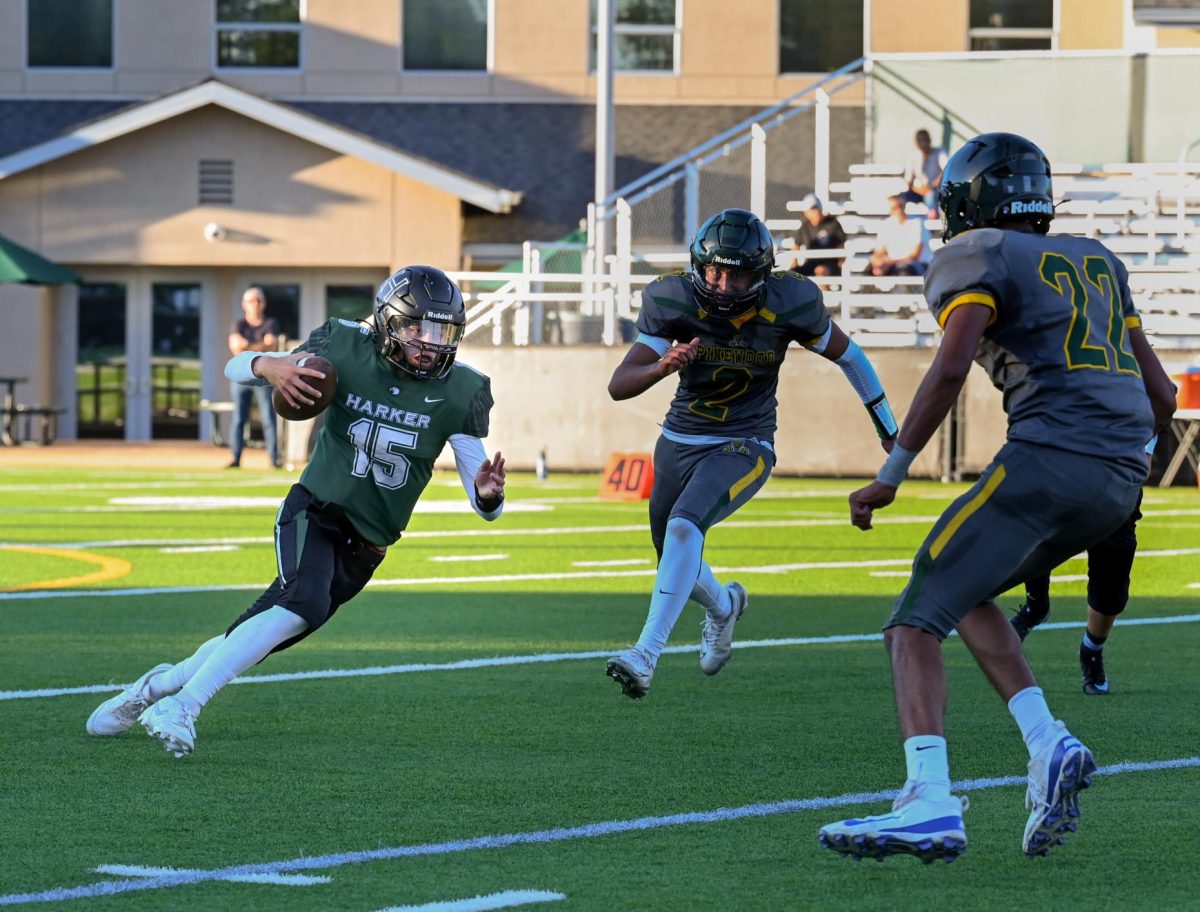Voters reject recall attempt, Gavin Newsom to remain in office
Two volunteers help a voter submit his California Gubernatorial recall ballot at the St. Francis of Assisi Parish polling center in San Jose. On Sept. 14, reigning democratic Gov. Gavin Newsom defeated a GOP-led recall attempt, remaining in office.
September 15, 2021
Gov. Gavin Newsom will remain in office after winning the recall effort today, defeating a Republican-backed attempt to oust him. With over eight million votes reported, in which 63.9% of Californians voted against while 36.1% voted in favor of the recall, Newsom led with a 2-to-1 margin. In Santa Clara County alone, almost 76% also voted against the recall, according to the Santa Clara County Registrar of Voters. Polls closed at 8 p.m. yesterday.
Newsom’s recall petition began in Feb. 2020 and escalated after the state’s public health mandates during the pandemic. Petitioners listed reasons for the recall, including Newsom’s declaration of California as a vote-by-mail state, increasing rates of homelessness over the past two years and shutdown of small businesses. The governor’s mask-free appearance at an upscale restaurant dinner gathering during a statewide stay-at-home order in Nov. 2020 also sparked controversy. Data from the Public Policy Institute of California shows that, during the pandemic, the majority of Californians have supported Newsom’s methods.

“Tonight, California voted ‘NO’ on the recall,” Newsom tweeted shortly after news of his victory. “We rejected cynicism and bigotry and chose hope and progress.”
The first Californian gubernatorial recall election took place nearly two decades earlier in 2003. Republican Arnold Schwarzenegger replaced then Democratic governor Gray Davis after an electricity crisis in the early 2000s.
Tonight, California voted NO on the recall and YES to…
Science.
Women’s rights.
Immigrant rights.
The minimum wage.
The environment.
Our future.We rejected cynicism and bigotry and chose hope and progress.
Thank you, California.
— Gavin Newsom (@GavinNewsom) September 15, 2021
“A recall is really often driven by those who want change,” said history and AP U.S. Government and Politics teacher Carol Green. “People who are okay and happy with the way things are don’t often go and take the actions, and that is why you inevitably see the success of recalls. It takes a smaller population participating because people generally don’t vote when they’re in a good mood.”
Newsom received support from President Joe Biden and other Democratic politicians such as Senator Elizabeth Warren (D-M.A.). At a rally in Long Beach yesterday, Biden joined Newsom to encourage Californians to turn out for the election.
“Newsom winning by such a large margin just tells us so much about how the electorate is feeling,” said Youth Activism Club Vice President Kris Estrada (11), minutes after Newsom’s victory. “The recall election was a referendum of Newsom’s performance as our governor, and it looks like the California population approves of his performance.”
Beginning in August, ballots were mailed out to all voters. Those voting by mail were required to have their ballot postmarked by yesterday, and the voter’s county registrar must receive the ballot by Sept. 21 in order to be counted. Voters were asked to vote on recalling the governor, and the second question asked for a replacement candidate in the case of Newsom’s defeat.
“I pre-registered to vote when I got my driver’s license. I just got a ballot in the mail, so [voting] was super easy,” Tristan said. “I’m glad that Newsom’s staying, and while I don’t love Newsom, I think that his policies, especially with COVID, have been good with the state.”
Out of the 46 candidates listed on the ballot, conservative talk radio host Larry Elder led the Republican front. Elder has criticized Newsom’s handling of the pandemic as well as tax and wildfire policies.
“Lots of the issues at stake here directly affect high schoolers,” said Saanvi Arora (12), who has been working with the educational advocacy organization GenUp to educate voters about the election and voting process. “The focal point of discourse has been reproductive rights issues, and also just issues of voting. All these issues directly affect high schoolers, because if voting becomes more difficult, it’ll be harder for high schoolers and younger students to actually get engaged politically.”
Newsom plans to run for reelection next year in the June 2022 primary elections, in which all candidates from all parties are placed on one ballot.
Additional reporting by Sydney Ling and Ananya Sriram.


















![“[Building nerf blasters] became this outlet of creativity for me that hasn't been matched by anything else. The process [of] making a build complete to your desire is such a painstakingly difficult process, but I've had to learn from [the skills needed from] soldering to proper painting. There's so many different options for everything, if you think about it, it exists. The best part is [that] if it doesn't exist, you can build it yourself," Ishaan Parate said.](https://harkeraquila.com/wp-content/uploads/2022/08/DSC_8149-900x604.jpg)




![“When I came into high school, I was ready to be a follower. But DECA was a game changer for me. It helped me overcome my fear of public speaking, and it's played such a major role in who I've become today. To be able to successfully lead a chapter of 150 students, an officer team and be one of the upperclassmen I once really admired is something I'm [really] proud of,” Anvitha Tummala ('21) said.](https://harkeraquila.com/wp-content/uploads/2021/07/Screen-Shot-2021-07-25-at-9.50.05-AM-900x594.png)







![“I think getting up in the morning and having a sense of purpose [is exciting]. I think without a certain amount of drive, life is kind of obsolete and mundane, and I think having that every single day is what makes each day unique and kind of makes life exciting,” Neymika Jain (12) said.](https://harkeraquila.com/wp-content/uploads/2017/06/Screen-Shot-2017-06-03-at-4.54.16-PM.png)








![“My slogan is ‘slow feet, don’t eat, and I’m hungry.’ You need to run fast to get where you are–you aren't going to get those championships if you aren't fast,” Angel Cervantes (12) said. “I want to do well in school on my tests and in track and win championships for my team. I live by that, [and] I can do that anywhere: in the classroom or on the field.”](https://harkeraquila.com/wp-content/uploads/2018/06/DSC5146-900x601.jpg)
![“[Volleyball has] taught me how to fall correctly, and another thing it taught is that you don’t have to be the best at something to be good at it. If you just hit the ball in a smart way, then it still scores points and you’re good at it. You could be a background player and still make a much bigger impact on the team than you would think,” Anya Gert (’20) said.](https://harkeraquila.com/wp-content/uploads/2020/06/AnnaGert_JinTuan_HoHPhotoEdited-600x900.jpeg)

![“I'm not nearly there yet, but [my confidence has] definitely been getting better since I was pretty shy and timid coming into Harker my freshman year. I know that there's a lot of people that are really confident in what they do, and I really admire them. Everyone's so driven and that has really pushed me to kind of try to find my own place in high school and be more confident,” Alyssa Huang (’20) said.](https://harkeraquila.com/wp-content/uploads/2020/06/AlyssaHuang_EmilyChen_HoHPhoto-900x749.jpeg)
















